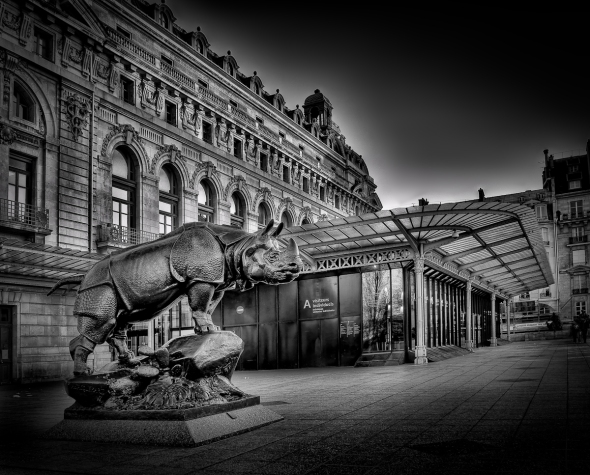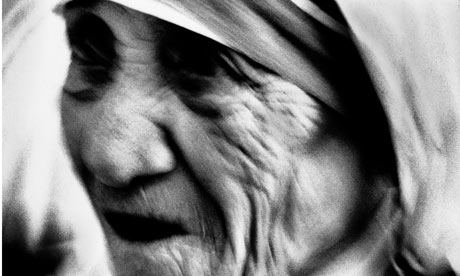
Photographer - Martin Soler
Year Created - May 2011
Source - http://martinsoler.com/2011/Use of lines - The photographer used the lines to directly lead me to the focal point in
the picture. There are several things that could grab your attention, but the lines direct
you to the statue.
Texture - The building in the background carries a great deal of texture with the bricks
and ridges. This adds an extra element to the image and helps the statue stand out with its
smooth texture.
Is the image black & white or color? - The image was produced in black and white
which helped capture certain elements within the photo. Although I would love to see
this image in color to distinguish how the use of lines would appear in its natural setting.
I chose this photo because I have just begun my journey learning about the use of lines
in photography, and I feel Mr. Soler did a great job capturing this technique within this
image.

Photographer - Lynne Ayers
Year Created - August 2012
Use of Shadows - The shadows of the individuals were used to break up the pattern of the
patio they were standing on. By doing this is made the photo more engaging to me.
In or out of focus - Certain parts of the photo remained sharp (the patio and the railings)
but the people in the image appear soft. I believe the photographer did this to keep the focus
on the dark to light contrast, while giving the viewers multiple places to appreciate.
Contrast - The photographer did an excellent job of dividing the photo into separate contrasts
throughout the photo. The multiple use of contrast from the dark and light areas enhances the
photo while your eyes travel throughout the picture.
throughout the photo. The multiple use of contrast from the dark and light areas enhances the
photo while your eyes travel throughout the picture.
I chose this photograph because I loved the patio design and how the shadows of the people
broke up the design. I felt like this was a picture you could look at for awhile and still find new
characteristics and details within it.

Photographer - Alexander Pyatiletov
Year Created - April 2011
Rule of thirds - If you placed this photograph into thirds vertically you would see how the
photographer slightly offset the woman from the center.
photographer slightly offset the woman from the center.
Contrast Appropriate - This is a high contrast photo with lots of bright and dark areas. The
darkness of the trees adds to the element of the infinite and lost feeling in the woods. But the
brightness and relaxed expression of the woman contradicts the darkness and lost feeling.
darkness of the trees adds to the element of the infinite and lost feeling in the woods. But the
brightness and relaxed expression of the woman contradicts the darkness and lost feeling.
Subject's Expression - The woman appears to be relaxed in the depth of woods without
shoes. I feel her arms are overly posed for this shot, and gives you the impression she is
doing it for the camera.
I chose this photograph because the woman reminded me off my wife and her figure. I
enjoyed the element of the beautiful woman at peace deep within the forest.
enjoyed the element of the beautiful woman at peace deep within the forest.

Photographer - Max Vadukul
Year Created - 1997
Obvious main subject - Mother Teresa consumes about 4/5 of this image, and this
is a great shot.
KEEP IT SIMPLE - The photographer used the "fly on the wall approach" and let
Mother Teresa's face do the talking for the picture.
Mother Teresa's face do the talking for the picture.
What feelings does the image create? - This image captured the very essence of who
Mother Teresa was. Even in her old age I can see and feel the passion in her eyes.
Her skin looks tired and worn, but her determination is what I feel when I look at her face.
Mother Teresa was. Even in her old age I can see and feel the passion in her eyes.
Her skin looks tired and worn, but her determination is what I feel when I look at her face.
I chose this picture because I am inspired by people who live their lives with a purpose.
I feel like few people have, or ever will inspire people like Mother Teresa did.
She is a Godly icon and I love and appreciate that.
I feel like few people have, or ever will inspire people like Mother Teresa did.
She is a Godly icon and I love and appreciate that.

